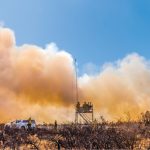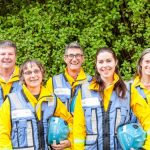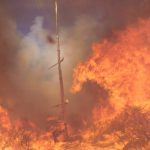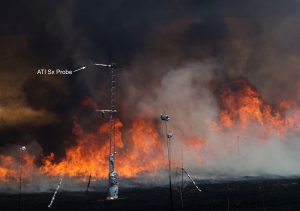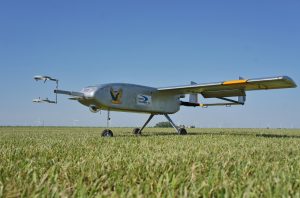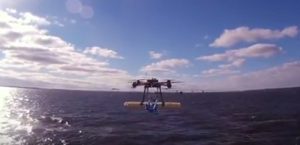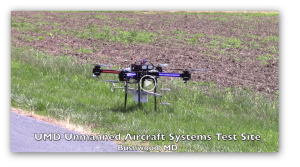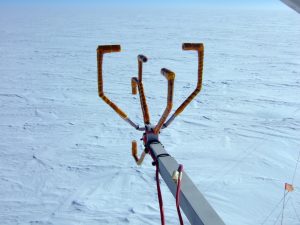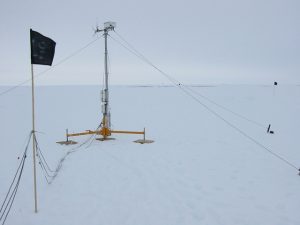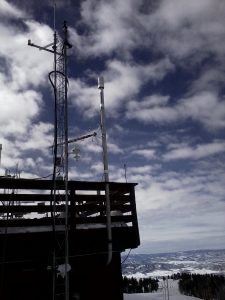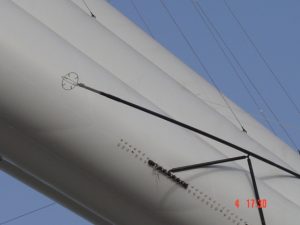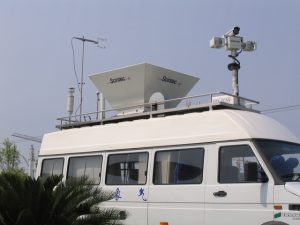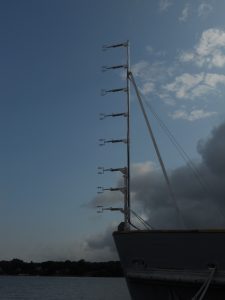Customer Applications
This Page is dedicated to our Customers!
We want to share your story dealing with our Meteorological Equipment with our visitors.
Please send us your story.
We'd love to add it to our website!
Thirty Years and Counting
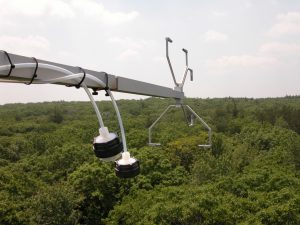
K Sonic mounted on EMS tower.
Harvard SEAS and Applied Technologies, Inc.
Micrometeorological research has been undertaken at the Harvard Forest for decades. The eddy-covariance flux tower at the Harvard Forest Environmental Measurements Site (HFEMS) was installed in 1989 and provides the world's longest continuous record of net ecosystem CO2 exchange, evaporation, and energy flux between a forest and the atmosphere, at hourly time resolution.
Maintained since 1990 by Harvard researchers Steve Wofsy and Bill Munger, the Environmental Measurement Station Eddy Flux Tower (EMS) is fitted with sensors essential for atmospheric flux studies in addition to the continuous CO2 exchange. One sensor that has been present since the tower’s initial deployment is Applied Technologies, Inc. (ATI) sonic anemometer.
“ATI sonics have been a mainstay at the Harvard Forest research site for over 30 years,” says Bill Munger, Senior Research Fellow in Atmospheric Chemistry, Harvard School of Engineering and Applied Sciences (SEAS). “I think in terms of the long-term historical significance, the Harvard Forest site is the vanguard for research of this nature. It's certainly the longest running CO2 flux observation site. With this 30 year record you can see how important ATI has been to us in our research.”
Listen to the Wind
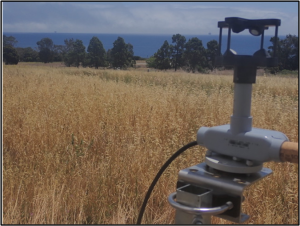
Dave Fitzjarrald PhD
Senior Research Associate
Atmospheric Sciences Research Center (ASRC)
University of Albany, State University of New York (SUNY)
Strong winds off the coast of Santa Barbara, California are referred to as Sundowner winds. These winds can be quite intense. Dr. Dave Fitzjarrald and his technical support team from the Atmospheric Sciences Research Center (ASRC) at the University at Albany, SUNY are testing a hypothesis that postulates that Sundowner winds depend on the presence of critical layers above the mountain crests that control the propagation of gravity waves in the lee of the coastal range. These winds, which can be aloft at a thousand meters or more in and above the boundary layer, haven’t yet reached the surface. Yet when these winds occur during a fire episode, which is becoming more and more commonplace, the results can be catastrophic.
The approach that Dr. Fitzjarrald employed might be viewed as radical by some camps. Fitzjarrald’s focus was to listen to the wind. “I want to filter out the environmental sounds from the ocean and surf and listen specifically to the wind,” states Fitzjarrald. “My goal is to distinguish the local wind noise near the surface to examine how the marine layer moves beneath the convective boundary layer by the late afternoon. Another person’s ‘noise’ will be our signal.”
To accomplish this Fitzjarrald deployed a miniature ultrasonic anemometer, the TriSonica Mini Wind and Weather Sensor, obtained through Applied Technologies, Inc. (ATI). Placing the TriSonica near the surface allowed Fitzjarrald to capture characteristics of the winds that cause the waving motion of the wild oat grass, known as “honami”, and see how the movement of the grass correlates to the turbulent flow field of the winds.

Facing the reality of unprecedented wildfires across the western United States, researchers at the New Zealand Forest Research Institute Limited, known as Scion, are actively studying how fire spreads to better understand how to respond and prepare for this growing and destructive trend.
And what sonics do they rely on?
Dr. Tara Strand, General Manager Forests and Landscapes, at Scion, responds,
“We have pushed sensors to their maximum limits, and one manufacture stands out as our sonic-of-choice: Applied Technologies, Inc. (ATI).”
New Zealand research burn experiment
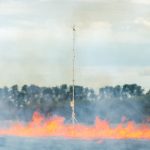 New Zealand research burn experiments test new theory on fire spread
New Zealand research burn experiments test new theory on fire spread
It’s a hot, windy February day - perfect conditions for fire (in the Southern Hemisphere). Twenty-seven scientists and several million dollars of specialised equipment are gathered in a paddock of harvested wheat stubble near Darfield, New Zealand.
This is the first phase of a four-year burning programme that will test a new theory on fire spread. The new theory was developed in the US Forest Service lab in Missoula, Montana, but this is the first time it’s been fully tested in the field.
More Photos
(click on pictures for full size images)
Images courtesy of:
Veronica Clifford, Scion for the images (Scion_ExtremeFire_Darfield_Bu
Craig Clements Ph.D at San Jose State University's Fire Weather Research Laboratory
For some users, this question would never arise, but for Craig Clements, Ph.D., San Jose State University the
answer was critical. Dr. Clements heads up a multi-discipline team at the Fire Weather Research Laboratory,
Wildfire Interdisciplinary Research Center whose goal is understanding how the atmosphere influences wildfire
behavior as well as how those fires influence the atmosphere. Other manufacturers responded that their sensors
would max out at 50° C., and since Clements was interested in measuring top plume temperatures around fires, that
eliminated their devices from further consideration. He posed the same question to Herb Zimmerman at Applied
Technologies, Inc. (ATI) and was encouraged at his response: “Let me test it and I will get back to you.” ATI’s tests
demonstrated that their sonic anemometer would work up to 110° C, a threshold that Clements subsequently
validated for himself.
A superior design
In Clements’ research, extreme temperatures are the norm. Devices rarely escape unscathed. “Most sonics melt
when exposed to these extreme temperatures, including ATI,” says Clements. “One thing about the ATI Sonic is that
the electronics are housed in the cross arm and for fire applications, that's important because you can wrap the
cross arm with fire proofing material to shield the electronics from radiation from the fire. ATI Sonics are the only
sonic that really survived our wildfire experiments and are the only ones calibrated high enough for our unique
environment.”
ATI’s design provides additional distinctions from Clements’ perspective. “I think ATI’s approach, in terms of where
the electronics are and the cross arm, is pretty cool,” mentions Clement. “This allows us to simply run one cable out
and it doesn't require a separate box. It's all confined into a very streamline product. That's important for reducing a
wake turbulence from the head itself.”
In the field of wildfire research, San Jose State University’s Fire Research Laboratory sets the standard for
benchmark data sets for the testing of fire models around the globe. “That's a lot of pressure on me to collect the
best data set as possible,” Clements says. Yet he is quick to summarize, “In my opinion, to conduct fire turbulence
research, you need to use ATI’s sensors. I own six of their anemometers, and soon will have two more. I just think
ATI sonics are simply the best sonics available, period!”
Other Customer Applications

